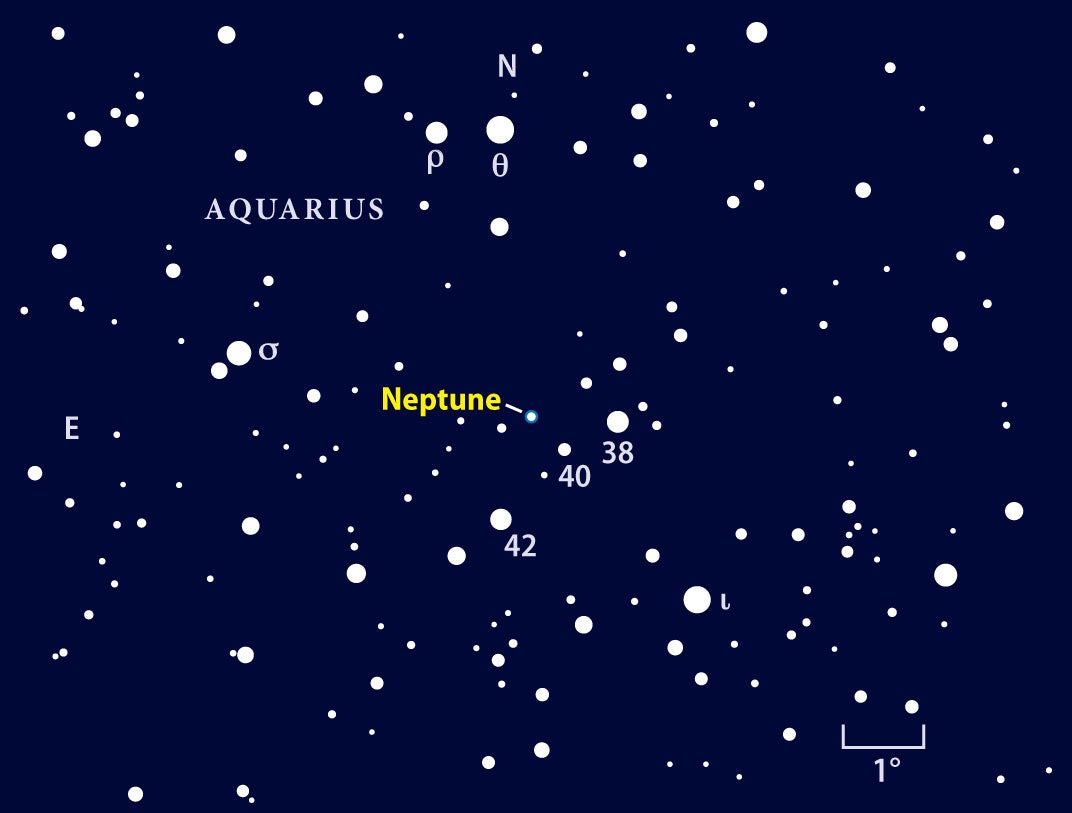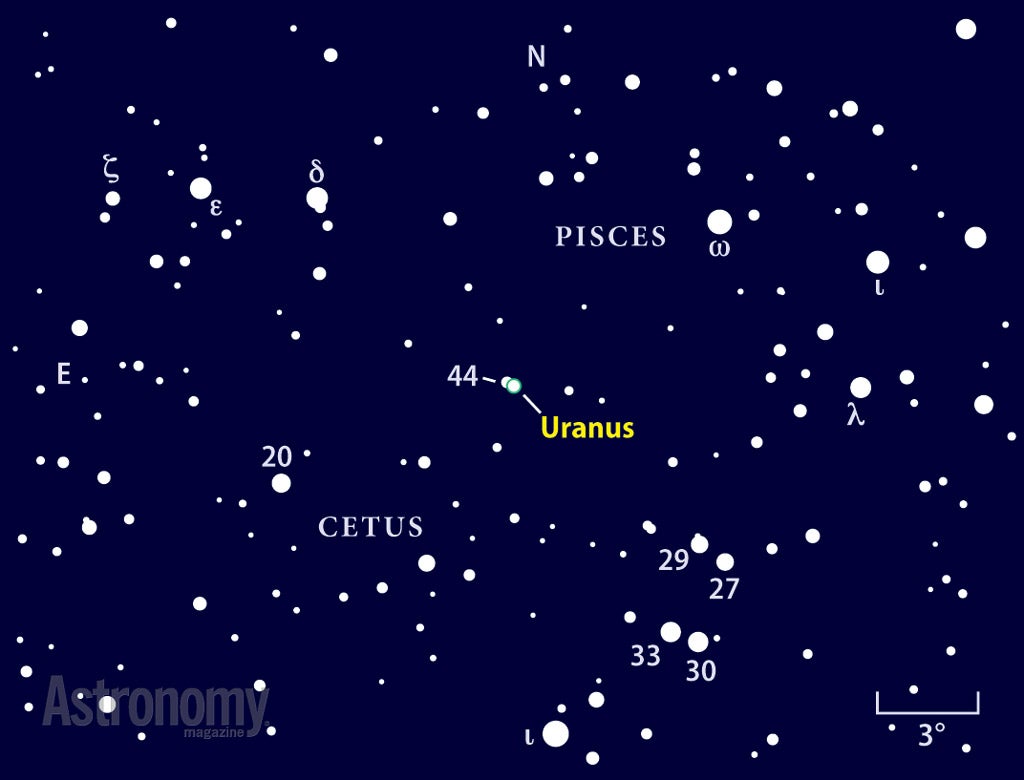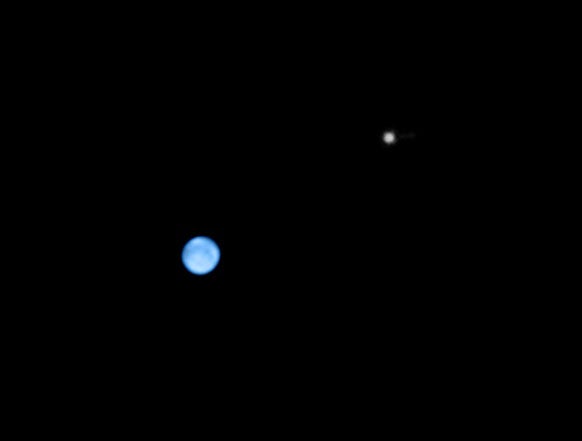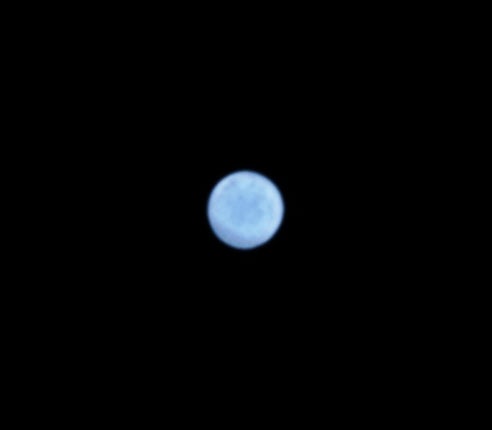Neptune’s opposition only marks the middle of the planet’s prime observing season., however. In fact, the most distant planet lies so far from Earth (some 2.7 billion miles [4.3 billion kilometers]) that its appearance hardly changes during the next several months. It remains at its peak brightness — magnitude 7.8 — until mid-October and doesn’t fade below magnitude 7.9 until 2014. It also stands higher in the evening sky during autumn than in late summer.
You’ll need binoculars or a telescope to spot Neptune. It resides among the background stars of Aquarius, roughly midway between Sigma (σ) Aquarii (magnitude 4.8) and 38 Aqr (magnitude 5.4) throughout the summer and fall. These two stars lie 5° apart and will appear in the same binocular field. Turn a telescope on Neptune, and boost the magnification to see its tiny blue-gray disk.
Senior Editor Richard Talcott suggests trying to spot both ice giants in one night. “The planets’ proximity to each other provides a perfect opportunity to track them both down on any clear night in the next three months,” he says. “You won’t see any detail on their disks, but it’s still exciting to observe the only two major planets found since antiquity.”
- Neptune is the solar system’s most distant planet, lying about 30 times farther away from the Sun than Earth, on average.
- Neptune is the most recently discovered planet, first spotted September 23, 1846.
- Neptune is the first planet discovered by prediction: French mathematician Urbain Le Verrier calculated its expected location, and German astronomer Johann Gottfried Galle observed it less than 1° away from that point.
- It takes Neptune 164.79 Earth years to orbit the Sun, but only 16.11 hours to rotate completely.
- Neptune’s color is a result of the abundant methane in its atmosphere.
- Neptune has 14 known moons. Astronomers discovered the latest one just this year from archival Hubble Space Telescope photos.
- Uranus was the first planet discovered with telescopic aid, first spotted by British astronomer William Herschel on March 13, 1781.
- Uranus’ blue-green color is a result of the planet’s methane, which absorbs red wavelengths and reflects blue.
- Uranus completes one orbit in 84.01 Earth years, and it rotates once every 17.24 hours.
- Uranus has a ring system turns edge-on to Earth every 42 years due to the distant planet’s changing seasons.
- Planetary scientists have discovered 27 satellites orbiting Uranus and have named them all after characters in works by William Shakespeare and Alexander Pope.
- Scientists think a huge collision early in Uranus’ history knocked the planet on its side; its rotation axis is now nearly parallel to its orbit.
- Video: Tour the solar system: Neptune, with Bill Andrews, former associate editor
- Video: Tour the solar system: Uranus, with Liz Kruesi, associate editor
- StarDome: Locate Neptune and Uranus in your night sky with our interactive star chart.
- The Sky this Week: Get your distant-planet info from a daily digest of celestial events coming soon to a sky near you.
- Sign up for our free weekly e-mail newsletter.














